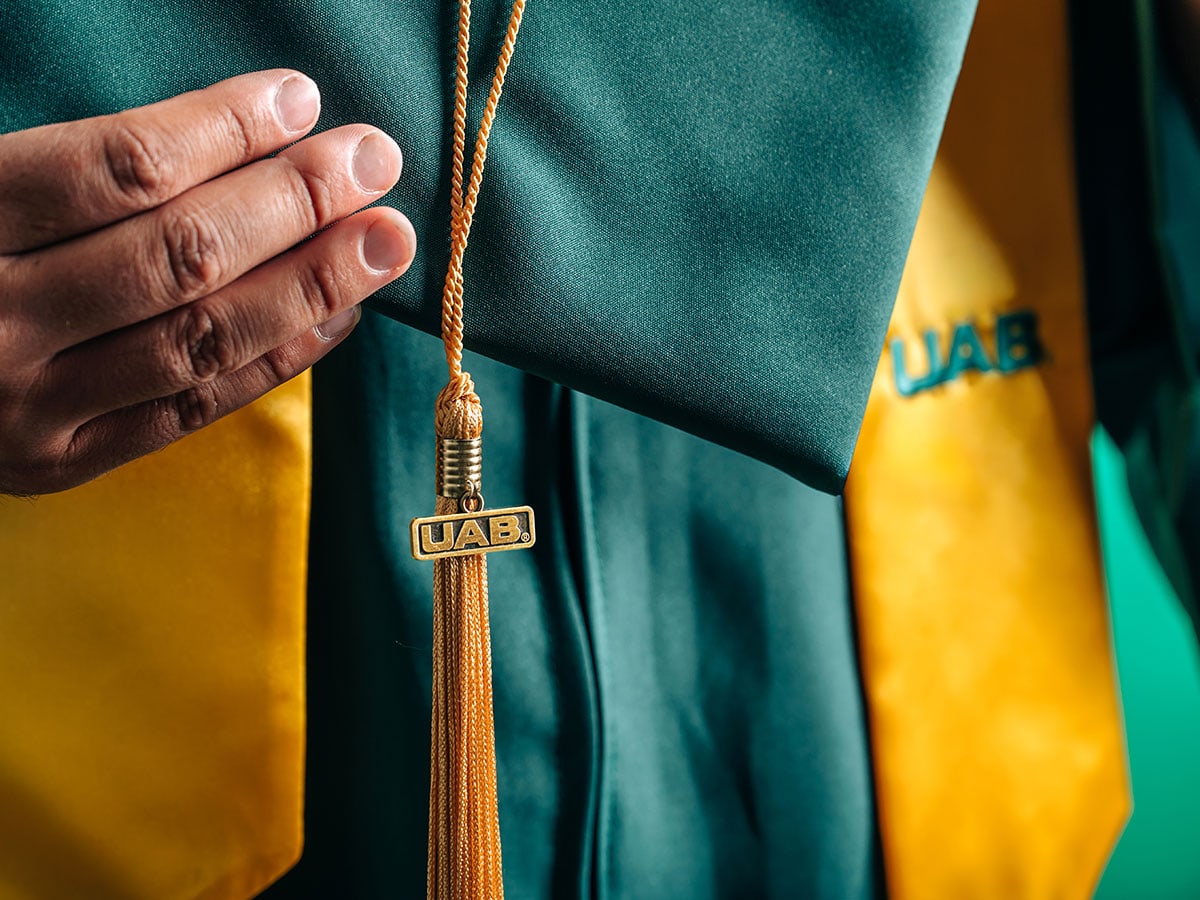Growing up, I always thought I wanted to pursue medicine and become a physician. So, as a Birmingham native, UAB was a natural choice for such studies. I maintained this career goal until my junior year of high school when I discovered the Alabama Brain Bee, a neuroscience competition for high school students organized by undergraduate students at UAB. My love for neuroscience truly began when I won the Alabama Brain Bee and subsequently participated in the USA National Brain Bee Competition. Prompted by that experience, I met with Dr. Carl McFarland to discuss volunteering in a laboratory on campus. Soon after, I began working in Dr. Edward Taub’s neuroimaging and neurorehabilitation laboratory during my senior year of high school.
 During my first few months in the laboratory I learned general Linux and MATLAB programming as well as a few basic neuroimaging techniques. Once I was able to apply these skills to conduct research, I quickly experienced both the frustration of failure and the satisfaction of success. As I continued to learn, I began to see creativity in my work, finding ways to make algorithms and processing more efficient or devising alternate methods to use when encountering obstacles. I felt the overwhelming pleasure to contribute to the body of scientific knowledge, thus solidifying my choice to pursue a career in research.
During my first few months in the laboratory I learned general Linux and MATLAB programming as well as a few basic neuroimaging techniques. Once I was able to apply these skills to conduct research, I quickly experienced both the frustration of failure and the satisfaction of success. As I continued to learn, I began to see creativity in my work, finding ways to make algorithms and processing more efficient or devising alternate methods to use when encountering obstacles. I felt the overwhelming pleasure to contribute to the body of scientific knowledge, thus solidifying my choice to pursue a career in research. Fueled by my earlier experiences with neuroscience research and my interest in mathematics, I joined Dr. Kristina Visscher’s human behavioral neuroscience laboratory, where I began working on my honors thesis: a functional network analysis of the older adult brain to determine if cognitive training results changes to the brain network. Because the brain is such a complex and intricate structure, mathematical tools are absolutely essential in understanding its multitude of interconnected regions. This research has perfectly suited my interests in mathematics and neuroscience, as I am able to study the brain using a branch of mathematics called graph theory.
Currently, I am a member of the Undergraduate Neuroscience Program, the Mathematics Fast-Track (5th year master’s) Program and the Science and Technology Honors Program. Throughout my time in the neuroscience program, I have earned a minor in chemistry, taken advanced neuroscience courses such as cognitive neuroscience and methods in human neuroimaging, and conducted neuroscience research continually over the past four years. Within the Mathematics Fast-Track, I have taken seminar courses covering a wide range of topics and was able to begin taking graduate level coursework starting in my junior year. While these programs provide a thorough background in formal logic and scientific concepts, my participation in the Science and Technology Honors Program reinforces learning through interdisciplinary scientific investigation. Furthermore, the thesis requirements for each of the programs allow me to be directly involved in both research and scientific communication.
While my combined curriculum has been quite rigorous, the challenges have been rewarding. Throughout my time working with Dr. Taub, I have co-authored two publications and have recently submitted for publication a manuscript of my own. Additionally, I received the Civitan International Research Center’s Honors Collegiate Research Fellowship and the UAB Comprehensive Center for Healthy Aging Research Scholarship to present my honors thesis work at the National Conference on Undergraduate Research and at the annual meeting of the Society for Neuroscience.
My work also often extends outside the classroom or research laboratory and into the community. Because the Alabama Brain Bee was such an integral part of inspiring my journey into the field of neuroscience, I jumped at the opportunity to direct the event, and I consider organizing the UAB Neuroscience Day and Alabama Brain Bee competition one of my greatest and most rewarding personal accomplishments. Additionally, I am co-president of the Undergraduate Neuroscience Society at UAB, a student organization dedicated to representing UAB’s Undergraduate Neuroscience Program and to promoting interest and education in the neurosciences within the UAB and surrounding community. We work to accomplish these goals through a number of activities and events including an invited lecture by a distinguished neuroscientist each; unique service opportunities related to medical care, mental health, and science teaching; and workshops on subjects of interest to neuroscience students, such as succeeding in undergraduate research or applying to graduate and medical schools.
Overall, my experiences at UAB have offered unique possibilities to further develop my skills as a researcher, network with distinguished scientists, access a wealth of knowledge, and give back to my community. Once I earn my master’s degree in mathematics, I intend to pursue a graduate degree in computational neuroscience. Without a doubt, UAB has helped place me one step closer toward reaching my career goal of holding a position at a university where I can conduct research and teach neuroscience to inspire a new generation of scientists and researchers.


